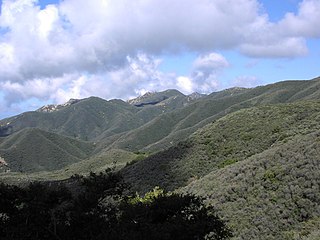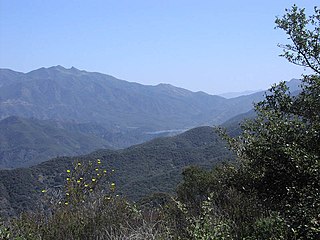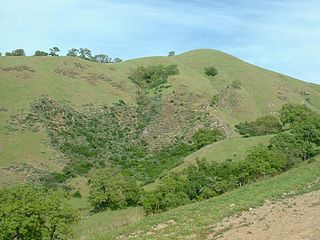
The California Floristic Province (CFP) is a floristic province with a Mediterranean-type climate located on the Pacific Coast of North America with a distinctive flora similar to other regions with a winter rainfall and summer drought climate like the Mediterranean Basin. This biodiversity hotspot is known for being the home of the Sierran giant sequoia tree and its close relative the coast redwood. [1] In 1996, the Province was designated as a biodiversity hotspot allowing it to join ranks among 33 other areas in the world with many endemic species. To be named a biodiversity hotspot, an area has to contain species and plant life that cannot be found anywhere else in the world. The California Floristic Province is home to over 3,000 species of vascular plants, 60% of which are endemic to the province. [2]
Contents
- Climate and topography
- California plant communities
- Cismontane region
- Montane region
- Transmontane region
- Endemic species and ecosystems
- Threatened and endangered
- Conservation efforts
- See also
- References
- Further reading
The California Floristic Province belongs to the Madrean Region of the Holarctic (or Boreal) Floristic Kingdom. As part of the Madrean Region, it is bordered on its east by the Great Basin Floristic Province, and to the south and southwest by the Sonoran Province (which includes the Mojave, Colorado, Sonoran, and Baja California deserts). To the north, the region is bordered by the Vancouverian Province of the Rocky Mountain Floristic Region, and much of coastal and mountain Northern California and southwestern Oregon are defined as falling into either province depending on a given author's delimitations.
With an area of 293,803 km2 (113,438 sq mi), as defined by Conservation International, it includes 70% of California and extends into southwestern Oregon, a small part of western Nevada and northern Baja California. The province is bordered by, and sometimes defined as partly coincident with, the Rocky Mountain Floristic Region in the north. This boundary is poorly defined as some leading geobotanists, including Robert F. Thorne (Flora of North America) and Armen Takhtajan, include Oregon and Northern California within the Rocky Mountain Province. [3]
The California Floristic Province is a world biodiversity hotspot as defined by Conservation International, due to an unusually high concentration of endemic plants: approximately 8,000 plant species in the geographic region, and over 3,400 taxa limited to the CFP proper, as well as having lost over 70% of its primary vegetation. A biodiversity hotspot contains irreplaceable areas to the plants and animals that live there. Among these unique regions, almost every one of them is subject to their exclusive species being at greater risk from the impact of humans. The greatest threat to this area is wilderness destruction caused by large commercial farming industries and the heavy expansion of urban areas. Conservation International proposed a strategy in 1998, to focus more specifically on areas of the California Floristic Province that contained the most human impact in order to lower the threat to the region. The issues that are causing the most threats to this province include but are not limited to population pressures, loss of habitat, unsustainable resource use, and introduced non-native species. [4]
















